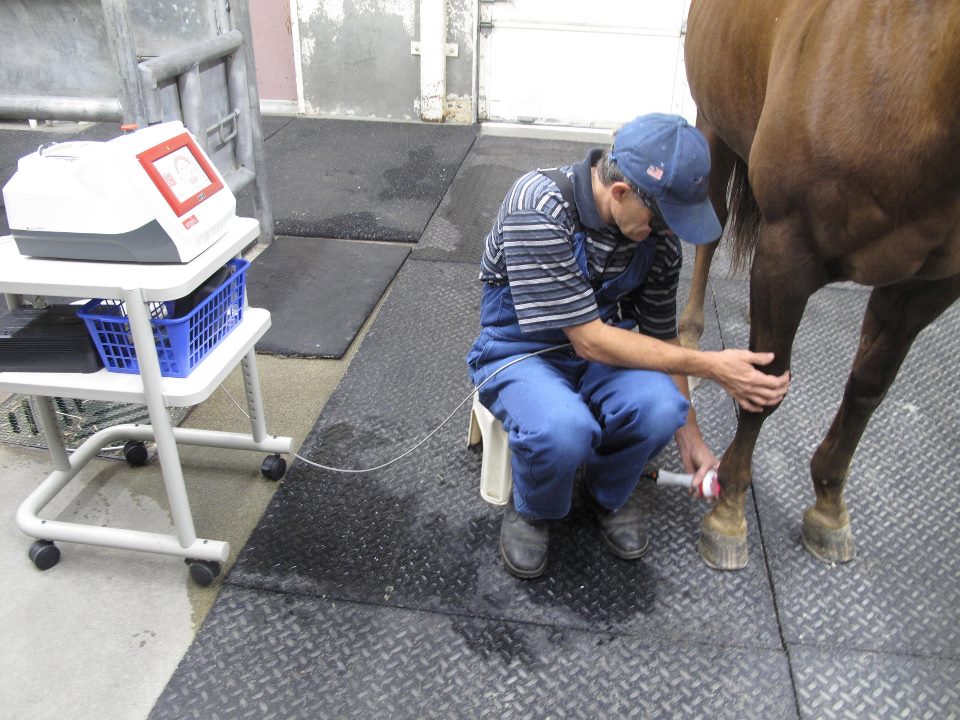Equine Therapy for Injury Recuperation: Just How Steeds Assist Heal Emotional Wounds
Wiki Article
Laser Treatment in Horse Treatment: A Modern Strategy to Improving Equine Wellness
Laser treatment has become a crucial method in equine treatment, using concentrated light power to foster mobile repair and quicken recovery from a selection of conditions. This non-invasive approach is especially effective in handling bone and joint injuries, wounds, and inflammatory problems, considerably boosting overall steed health. By promoting mitochondrial task and increasing ATP manufacturing, laser therapy not only enhances flow yet also gives substantial discomfort alleviation. As this ingenious therapy continues to obtain traction, it opens up interesting opportunities for attending to chronic conditions like joint inflammation and unguis problems, signifying a transformative shift in vet care. What makes this technique especially compelling?Understanding Laser Therapy
Laser therapy, a non-invasive therapy technique, has gained substantial grip in equine medicine due to its efficiency in advertising healing and discomfort relief. Enhanced ATP degrees speed up tissue fixing processes and reduce swelling, making laser therapy particularly reliable for treating bone and joint injuries, injuries, and other inflammatory problems in equines.There are several kinds of lasers utilized in equine therapy, each with particular wavelengths and power outputs customized to different therapeutic demands. Low-level laser treatment (LLLT), likewise called cold laser treatment, employs reduced power levels to boost cell function without creating thermal damage. High-intensity laser treatment (HILT), in comparison, utilizes greater power levels to accomplish much deeper tissue infiltration and more considerable therapeutic impacts.
Veterinarians utilize different laser tools and methods relying on the condition being treated and the wanted depth of cells penetration. Appropriate training and experience are important for ensuring the risk-free and reliable application of laser therapy, consequently optimizing its therapeutic capacity while decreasing dangers.
Advantages for Equine Health And Wellness
With a solid understanding of how laser therapy works, it is essential to explore its countless advantages for equine health and wellness. By promoting cellular feature, laser therapy promotes faster wound recovery and help in the regrowth of broken cells.
In addition, laser treatment has been revealed to improve flow, thereby boosting blood circulation to impacted areas. Boosted flow ensures that essential nutrients and oxygen are supplied a lot more efficiently, facilitating the recovery process. In addition, laser therapy's anti-inflammatory effects assist in decreasing swelling and pain, which is important for the overall health of the horse.
Discomfort management is an additional considerable advantage. By releasing endorphins and obstructing pain signals, laser treatment offers effective, non-invasive remedy for both acute and persistent pain. This can add to improved mobility and high quality of life for the animal.
Last but not least, laser treatment is a non-invasive therapy choice, minimizing the threat of difficulties connected with even more intrusive procedures. Its convenience and efficacy make it an invaluable tool in modern-day equine veterinary medication.
Typical Conditions Dealt With

An additional widespread problem treated with laser therapy is arthritis. Additionally, laser treatment is used in the administration of wounds.
Equine respiratory problems, such as reoccurring respiratory tract blockage (RAO), likewise respond positively to laser treatment. The anti-inflammatory buildings of the therapy aid in reducing respiratory tract swelling, thus enhancing respiratory system function. In addition, laser treatment is useful in treating unguis troubles, consisting of laminitis and abscesses. By boosting i thought about this flow and decreasing discomfort, it supports quicker recuperation.
Procedure and Security
Implementing laser treatment in equine therapy involves a thorough procedure to make sure both efficacy and security. Equine Therapy. The procedure begins with a detailed veterinary evaluation to establish the suitability of laser treatment for the horse's certain problem. Once considered ideal, the treatment area is prepared by cleansing and, if essential, clipping the hair to enhance laser penetrationThe expert must choose the right kind of laser, generally a low-level laser (LLLT) or a high-power laser (HPL), depending upon the problem being dealt with. The laser device is then adjusted to the proper wavelength, power, and period settings. During the application, the professional relocates the laser over the targeted location in an organized he said manner, guaranteeing constant and also direct exposure.
Safety and security protocols are strictly stuck to, including using protective eyeglasses for both the expert and the steed. In addition, it is essential to keep track of the equine for any kind of indicators of pain or damaging responses throughout the treatment. Post-treatment, the steed is often given a period of remainder to allow the therapeutic effects to manifest.

Future of Equine Laser Therapy
As improvements in vet medication remain to unfold, the future of equine laser treatment holds substantial pledge. Emerging technologies and much deeper clinical insights are readied to improve and broaden the applications of laser therapy for steeds. One of the most awaited advancements is the integration of advanced imaging strategies that enable for more specific targeting of afflicted tissues, therefore improving therapeutic end results. Furthermore, the development of mobile and user-friendly laser tools is most likely to make this treatment a lot more easily accessible to a broader variety of specialists and steed owners.Furthermore, ongoing research study right into the molecular and cellular devices of laser therapy will likely generate enhanced methods tailored to certain problems, improving performance and reducing treatment times. Individualized treatment plans based upon hereditary and biochemical markers might come true, making sure that each steed receives the most proper and reliable care.
Moreover, governing advancements and standardization of procedures will certainly boost the reliability and dependability of laser treatment try this out in equine technique. Equine Therapy. As these developments continue to arise, equine laser treatment is positioned to come to be an indispensable element of veterinary care, offering boosted recovery and boosted quality of life for equines internationally
Verdict

Report this wiki page